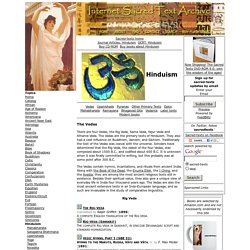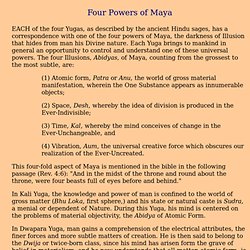

Vedanta : Discover Vedanta, Learn Vedic Teachings Online, Introduction to Vedanta by Authors Surya Tahora & Neema Majmudar. The teaching methodology Why is there a need for a specific method of teaching?

Because we are not speaking about a system of philosophy that just needs to be clearly presented with a definition of the main concepts and its underlying assumptions. We are also not speaking about a simple descriptive theory which needs to be experienced and validated by an action like meditation. We are speaking about a means of knowledge revealing and unfolding the reality as it is.
Therefore, it should have a method to make one understand this reality. Vedanta employs extensively negative sentences (neti, neti 25, which means not this, not this),to indicate the nature of reality. Since it is not sufficient to only negate what the reality is not, the Upanishads gives also a positive revelation by using defining words as satyam, existence and jnanam, consciousness with their implied meaning28.
The cause and effect method :
Yoga e Ciencia. Shantiana.weebly.com/uploads/2/6/8/8/2688842/suryashakti1.pdf. Hinduism. Sacred-texts home Journal Articles: Hinduism OCRT: Hinduism Buy CD-ROM Buy books about Hinduism Vedas Upanishads Puranas Other Primary Texts Epics Mahabharata Ramayana Bhagavad Gita Vedanta Later texts Modern books The Vedas There are four Vedas, the Rig Veda, Sama Veda, Yajur Veda and Atharva Veda.

The Vedas are the primary texts of Hinduism. They also had a vast influence on Buddhism, Jainism, and Sikhism. The Vedas contain hymns, incantations, and rituals from ancient India. Rig Veda The Rig-Veda translated by Ralph Griffith [1896]A complete English translation of the Rig Veda. Rig-Veda (Sanskrit)The complete Rig Veda in Sanskrit, in Unicode Devanagari script and standard romanization. Vedic Hymns, Part I (SBE 32)Hymns to the Maruts, Rudra, Vâyu and Vâta, tr. by F. Vedic Hymns, Part II (SBE 46)Hymns to Agni, tr. by Hermann Oldenberg [1897]The Vedic Hymns to Agni. A Vedic Reader for Students (excerpts) by A.A. Sama Veda Yajur Veda The Texts of the White Yajurveda translated by Ralph T.H. Four Powers of Maya. EACH of the four Yugas, as described by the ancient Hindu sages, has a correspondence with one of the four powers of Maya, the darkness of Illusion that hides from man his Divine nature.

Each Yuga brings to mankind in general an opportunity to control and understand one of these universal powers. The four Illusions, Abidyas, of Maya, counting from the grossest to the most subtle, are: This four-fold aspect of Maya is mentioned in the bible in the following passage (Rev. 4:6): "And in the midst of the throne and round about the throne, were four beasts full of eyes before and behind.
" In Kali Yuga, the knowledge and power of man is confined to the world of gross matter (Bhu Loka, first sphere,) and his state or natural caste is Sudra, a menial or dependent of Nature. During this Yuga, his mind is centered on the problems of material objectivity, the Abidya of Atomic Form. The seventh and highest sphere is Satya Loka, abode of God, the only Real Substance, Sat, in the universe.